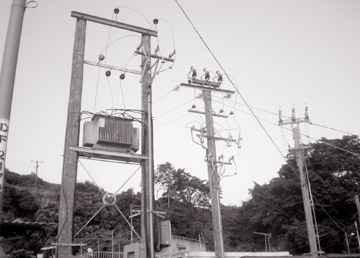|
A sustainable solution:
Coal power plant projects to be expedited
By Dhaneshi Yatawara
Amidst dramatic climate challenges and sky-rocketing diesel and
furnace oil prices, Sri Lanka lit up the country without interruption.
Electricity was provided to the public without power cuts even during
difficult times. The buying capacity for electricity generated using
diesel and furnace oil has now hit the limits.
 “There is a limit for a government or a country to bear costs. Loans
are taken from State banks which cannot continue. The banking system
cannot break down,” Power and Energy Minister Pavithra Wanniarachchi
said. “There is a limit for a government or a country to bear costs. Loans
are taken from State banks which cannot continue. The banking system
cannot break down,” Power and Energy Minister Pavithra Wanniarachchi
said.
“We are submitting this to the Public Utility Commission and expect
suggestions from the Commission on behalf of the people,” Minister
Wanniarachchi said.
“The proposed increase is temporary. We will soon establish the coal
power plants and bring this burden down to a manageable level. We need
to reach a level that the Government can bear. We are not trying to
completely cover up the gap,” she explained.
As per the directives of President Mahinda Rajapaksa, the Ministry of
Power and Energy is expediting the already planned low cost power plants
to bring a sustainable solution to the problem of the ever increasing
electricity tarrifs.
A unit of electricity produced using coal costs around Rs. 7.50. It
is more cost effective than purchasing electricity at Rs. 40 – 60 and
providing it to consumers at Rs. 3.
“At present we produce only 3,000 mega watts of electricity. A
considerable percentage of this is produced using diesel and furnace oil
and is purchased at a higher cost between Rs. 40 and 60. The Ceylon
Electricity Board (CEB) provides it to consumers; the first 30 units per
month at Rs. 3 per unit and up to the next 30 units at Rs. 4.70 per
unit. We need to find a sustainable solution which the country can
bear,” said Minister Wanniarachchi.
According to the Minister, the mega plan will involve expediting coal
power plant construction to produce electricity cost effectively. Thus,
the two coal power plants at Norochcholai, each capable of producing 300
mega watts of electricity, are in the pipeline.

Power and Energy Minister
Pavithra Wanniarachchi |

CEB Additional Finance Manager
P.K. Kulathunga |
“Whatever difficulties we face, these two power plants will commence
this year in addition to the one operating at Norochcholai. Construction
of the long-planned Sampur coal power plant too will commence this year.
It will produce 500 mega watts. Construction work at the coal power
plant at Induruwa with assistance from the Japanese Government will also
start this year,” she said.
Private sector plants
The CEB would not purchase electricity from private sector-run
fuel-powered thermal power plants when these contracts lapse, to reduce
CEB electricity generation costs to provide relief to consumers, said
Minister Wanniarachchi. She said the CEB could stop buying electricity
at higher prices from the private sector due to the unwavering political
decision taken by President Rajapaksa to set up coal power plants that
generate a unit of electricity at a low cost.
“I'm concerned more about the poor communities. Our target is to
elevate the living standards of the needy communities,” she said. One
million people in the country use less than 30 units of electricity and
another one million use less than 90 units.
“The Norochcholai power plant is operating. As the previous regimes
didn't implement these low cost power generating plants, we didn't have
trained engineers. For the country to take development strides, it needs
proper policies. With such policies, we can develop the human resources
and the infrastructure,” she said.
“I need to take responsibility for all actions of my Ministry. I
cannot leave a mess when I leave this post. I'm ready to face any
criticism in my efforts to develop the country,” the Minister said.
“We have provided electricity to many rural areas and improved the
living standards. Haven't we provided electricity to the poor man? We
have not gone for power cuts even with all the difficulties,” she said.
Break even level
Since 2010, the CEB has been operating at a break even level, said
CEB Additional Finance Manager P.K. Kulathunga.
As he said, the condition aggravated after 2010 when global fuel
prices increased drastically. “During 2008, we bought a litre of diesel
for Rs.71 and in 2009 it increased to Rs.90; in 2010, to Rs.115 and now
it has sky-rocketed to Rs.121,” he said.
Naphthan, another fuel used in power generation was Rs.47 per litre
in 2008 and by 2012, it had shot up to Rs.90. Furnace oil, which was Rs.
35 per litre in 2008 and Rs. 65 in 2012, has now increased to Rs. 90.
“Though fuel prices came down in 2011, they again increased beyond
the earlier limit to Rs. 100 per litre,” Kulathunga said, explaining
that the cost of oil-generated power will continue to rise.
Power production has been based on thermal power plants lately,
according to Kulathunga. In 2011, the production of electricity through
hydro power was 35 percent of the total production and by 2012 it had
declined to 23 percent. In contrast, the CEB had to depend 70 – 75
percent on thermal power plants, according to Kulathunga. Coal power
plants had contributed nine and 12 percent in 2011 and 2012
respectively.
“In 2010, because of good weather, we produced 47 percent of the
requirement from hydro power, but with dry weather in 2012, this
decreased to 23 percent,” he said.
“The current loss per unit of electricity is Rs. 5.84. We provide
electricity to consumers bearing this loss though the actual production
cost is Rs.21.50,” he said. At the inception, the generation cost per
unit is Rs. 16.29, during transmission Rs.1.15 gets added to a unit and
during distribution Rs.4.
Accordingly, the total liabilities of the CEB, to the People’s Bank,
independent power producers and the Ceylon Petroleum Corporation is
nearly Rs. 80.4 billion. The financial loss of the CEB in providing
electricity for domestic purposes alone is Rs. 32.8 billion, of a total
loss of Rs. 61.22 billion.
“As of April 1, the estimated cost of a unit of electricity is Rs.
23.13 – higher than the present cost,” Kulathunga said. According to
him, CEB losses in 2013 is estimated to be Rs. 78 billion.
To stabilise the situation and bring the cost to a bearable level,
the CEB plans to recover its losses with the proposed tariff system.
“Out of the five million consumers, 3.6 million fall under the 0 – 90
units category,” he said. Commencing construction of the two coal power
plants within this year would bring a sustainable solution to this
crisis, Kulathunga said. |


